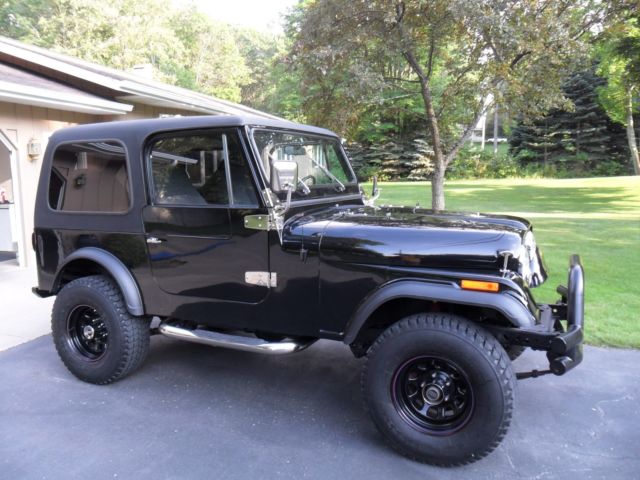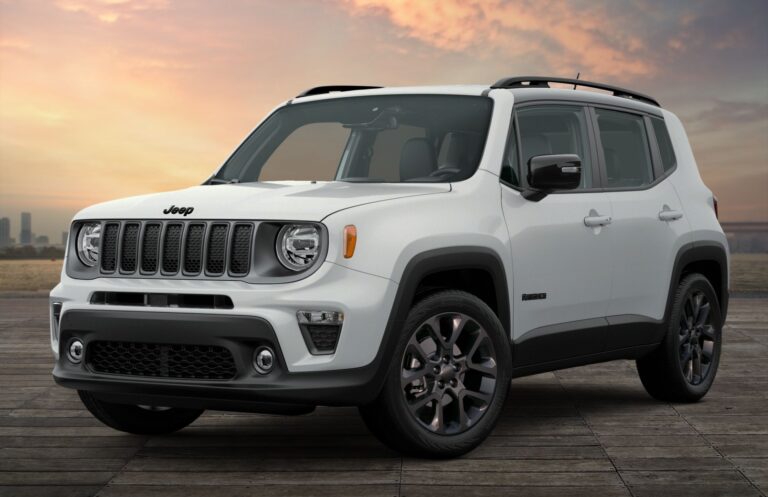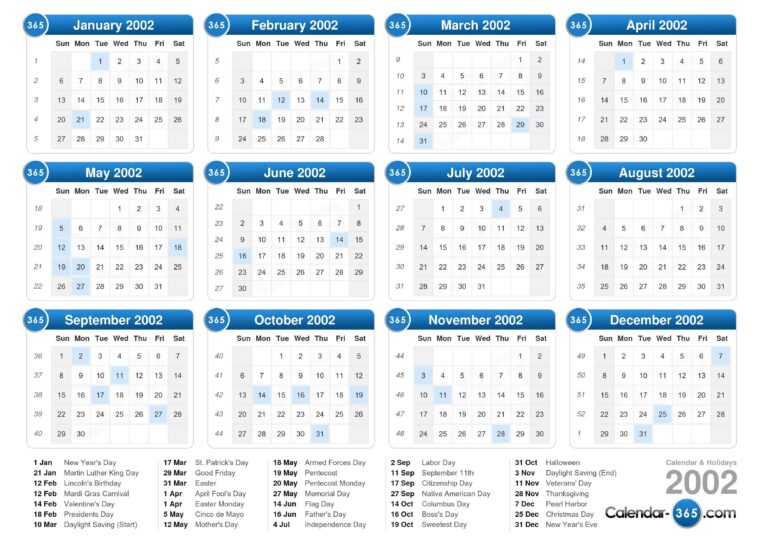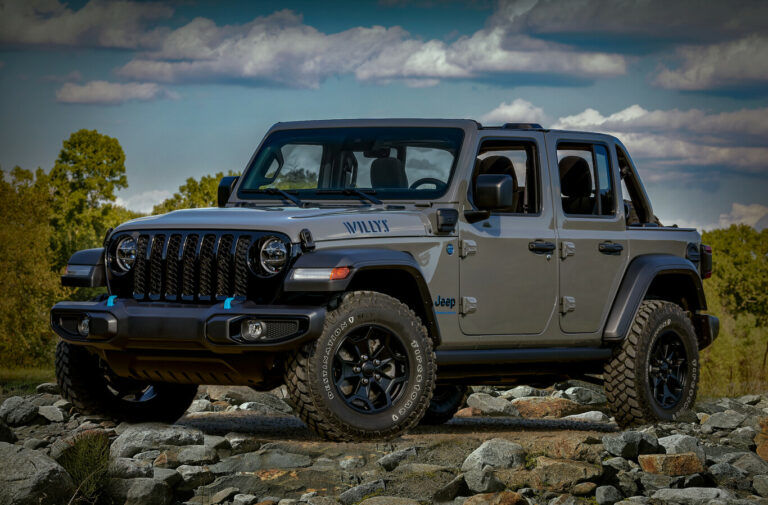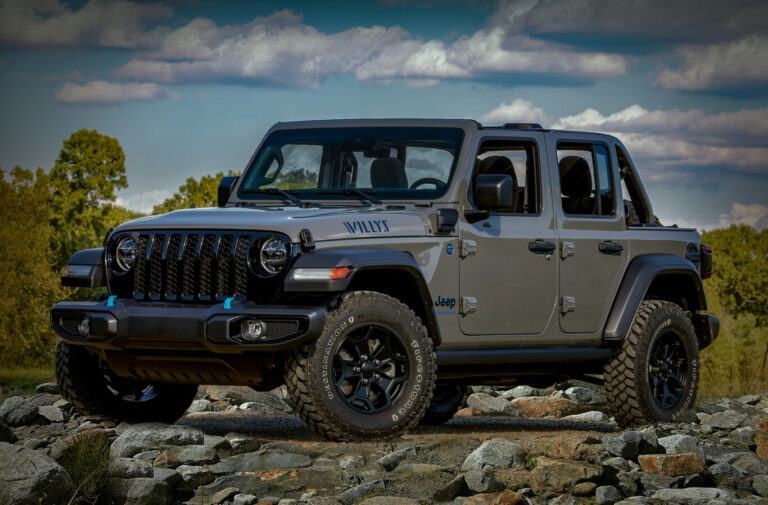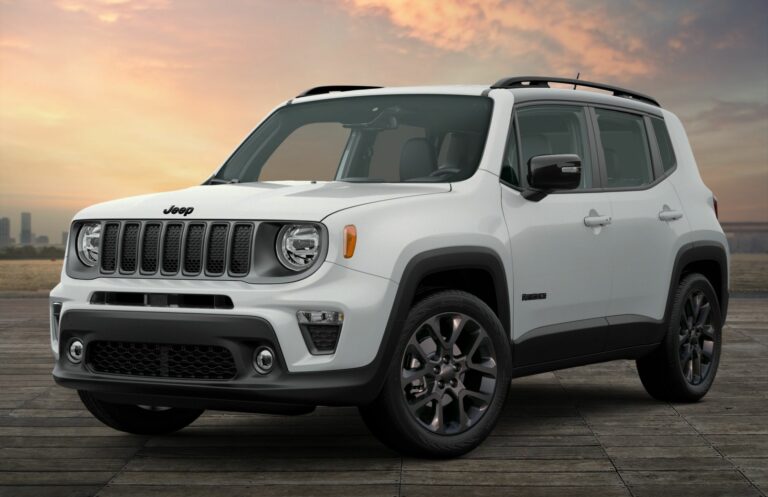Jeep CJ7 Tub For Sale: A Comprehensive Buyer’s Guide
Jeep CJ7 Tub For Sale: A Comprehensive Buyer’s Guide jeeps.truckstrend.com
The Jeep CJ7, produced from 1976 to 1986, holds a special place in the hearts of off-road enthusiasts and classic vehicle collectors alike. Known for its rugged simplicity, iconic styling, and unparalleled off-road capability, the CJ7 remains a highly sought-after vehicle for restoration projects, custom builds, and daily driving. However, decades of use, exposure to the elements, and the rigors of off-roading often take their toll, with the vehicle’s body, or "tub," being particularly susceptible to rust, corrosion, and damage. This comprehensive guide delves into everything you need to know about finding and purchasing a Jeep CJ7 tub for sale, ensuring your beloved classic can live on for many more adventures.
Understanding the Jeep CJ7 Tub
Jeep CJ7 Tub For Sale: A Comprehensive Buyer’s Guide
At its core, the Jeep CJ7 tub is the main body shell of the vehicle, serving as the passenger compartment and the primary mounting point for numerous components. It encompasses the floorboards, firewall, cowl, rear quarter panels, inner fender wells, and often the windshield frame mounts. Unlike modern unibody vehicles, the CJ7 tub sits atop a separate, robust ladder frame. This body-on-frame construction is a hallmark of traditional Jeeps and greatly simplifies the process of replacing the tub without disturbing the powertrain or chassis. For many CJ7 owners, a new or replacement tub isn’t just a cosmetic upgrade; it’s a critical structural component that ensures the vehicle’s integrity, safety, and longevity.
Why Buy a Replacement CJ7 Tub?
There are several compelling reasons why a Jeep CJ7 owner might find themselves in the market for a new tub:
- Rust and Corrosion: This is by far the most common reason. Original CJ7 tubs, especially those exposed to road salt, humidity, or harsh climates, are notorious for developing significant rust. Common problem areas include the floorboards (especially under the pedals and seats), body mounts, rear quarter panels, and the cowl area where the windshield attaches. Extensive rust compromises structural integrity and is often beyond economical repair.
- Accident Damage: While the CJ7’s frame is robust, the tub can sustain severe damage in accidents. Repairing crumpled sheet metal, particularly complex curves and structural areas, can be more expensive and time-consuming than replacing the entire tub.
- Restoration Projects: For purists aiming for a factory-new look or a concours-level restoration, starting with a brand-new, rust-free tub is often the most efficient and effective path. It provides a clean canvas for a high-quality paint job and ensures all mounting points are true.
- Custom Builds: Builders looking to create a unique, highly modified CJ7 often prefer to start with a fresh tub. This allows for easier modifications, such as custom roll cages, seating configurations, or dashboard layouts, without having to contend with existing damage or rust.
- Wear and Tear: Decades of off-roading, heavy use, and modifications can lead to cracks, fatigue, or stress points in the original sheet metal, particularly around suspension mounting points or areas that experience significant flex.

Types of CJ7 Tubs Available
When searching for a Jeep CJ7 tub for sale, you’ll generally encounter three main categories, each with its own set of pros, cons, and price points:
1. Original/Used Steel Tubs

These are tubs salvaged from donor vehicles. They offer authenticity but come with significant caveats.
- Pros: Genuine factory look and feel; potentially the cheapest upfront cost if you find a good deal.
- Cons: Almost always have some degree of rust (even if hidden), dents, or previous questionable repairs. Requires extensive bodywork, sandblasting, and potentially welding before paint. Finding one in truly excellent condition is rare. Hidden rust can be a major issue, especially in structural areas.
- Where to Find: Salvage yards, online classifieds (Craigslist, Facebook Marketplace), Jeep enthusiast forums, private sellers.
2. Reproduction Steel Tubs
These are brand-new tubs manufactured to original specifications, typically using modern stamping techniques and corrosion protection.
- Pros: Brand new, no rust, accurate dimensions, strong and durable. Provides a perfect foundation for a high-quality restoration. Often come e-coated (electrophoretically coated) for initial rust protection.
- Cons: The most expensive option. While dimensions are accurate, minor fitting and alignment adjustments might still be required during installation, as is common with any aftermarket body panel. Shipping costs can be substantial due to size and weight.
- Manufacturers: Leading manufacturers include Omix-ADA, Crown Automotive, and MD Juan (Philippines-based, known for high-quality reproduction bodies). These are often sold through major Jeep parts retailers like Quadratec, Morris 4×4 Center, and 4 Wheel Parts.
3. Fiberglass Tubs
An alternative to steel, fiberglass tubs are molded composite bodies designed to mimic the original CJ7 shape.
- Pros: Absolutely rust-proof, lightweight (improving performance and fuel economy), easier to repair minor damage (using fiberglass repair kits), often less expensive than new steel reproduction tubs.
- Cons: Less authentic feel (some argue they don’t have the same "thud" as steel), can flex more under extreme off-roading (requiring additional bracing), susceptible to cracking from severe impacts (though often repairable), not for purists seeking original factory materials. May require more extensive preparation for paint to achieve a smooth finish.
- Manufacturers: Companies like Collins Bros Jeep (CJ-7 Tubs), Wild Boar Products, and other custom fabricators produce fiberglass tubs.
Key Considerations When Buying a CJ7 Tub
Purchasing a CJ7 tub is a significant investment. Here’s what you need to consider to make an informed decision:
- Condition (for Used Tubs): If opting for a used steel tub, inspect it meticulously. Look for rust in common areas (floorboards, body mounts, wheel wells, rear cross member, firewall seams). Check for previous repairs, Bondo patches, and signs of accident damage (warped panels, uneven gaps). A "good deal" on a rusty tub can quickly turn into a money pit.
- Material Choice: Re-evaluate your priorities: Is absolute authenticity paramount, or is rust prevention and weight savings more important? Steel offers originality and robustness; fiberglass offers rust immunity and lightness.
- Completeness: Is the sale just for the bare tub, or does it include the fenders, hood, tailgate, windshield frame, or even a dash? More complete kits will be more expensive but save you the hassle of sourcing individual panels.
- Fitment and Alignment: Even new reproduction tubs might require minor adjustments. Ensure you or your installer has the skills and tools to align the tub correctly with the frame, doors, and other body panels.
- Shipping and Logistics: Tubs are large and awkward to ship. Freight costs can be substantial, often ranging from several hundred to over a thousand dollars within the country. Factor this into your budget. Local pickup can save a lot, but requires a large trailer or flatbed.
- Legalities: For CJ7s, the primary VIN (Vehicle Identification Number) is stamped on the frame, not the tub. Therefore, replacing the tub typically doesn’t involve VIN transfer issues. However, if a tub has a VIN plate (some might for donor purposes), ensure it’s removed or clearly documented to avoid confusion.
Where to Find a CJ7 Tub For Sale
- Specialized Jeep Parts Retailers: Websites like Quadratec, Morris 4×4 Center, and 4 Wheel Parts are excellent sources for new reproduction steel and fiberglass tubs from reputable manufacturers. They offer warranties and customer support.
- Online Marketplaces: eBay, Craigslist, and Facebook Marketplace are good for finding used tubs from private sellers. Be cautious, ask for many detailed photos, and ideally, inspect in person.
- Jeep Forums and Classifieds: Dedicated Jeep enthusiast forums (e.g., Jeep Forum, CJ-8 Scrambler Forum) often have classified sections where members sell parts. This can be a great way to find well-maintained used tubs or get leads from within the community.
- Salvage Yards/Junkyards: While increasingly rare, some older salvage yards might still have CJ7s with usable tubs. This is often a "needle in a haystack" search but can yield original parts.
- Restoration Shops: Some professional Jeep restoration shops might have tubs in stock or know where to source them, especially if they specialize in CJ models.
The Installation Process (Brief Overview)
Replacing a CJ7 tub is a significant undertaking, but it’s manageable for a mechanically inclined individual with proper tools and patience.
- Disassembly: Remove all components from the old tub: seats, dash, wiring, steering column, fuel tank, brake lines, etc. Unbolt the tub from the frame.
- Frame Inspection: With the old tub off, it’s the perfect opportunity to inspect the frame for rust, cracks, or damage. Repair or reinforce as needed, and consider sandblasting and painting the frame for longevity.
- Mounting the New Tub: Carefully lower the new tub onto the frame, ensuring proper alignment with body mounts. Bolt it down securely.
- Component Transfer: Reinstall all the components removed earlier into the new tub. This includes wiring harnesses, dashboard, steering column, pedal assembly, and brake/fuel lines.
- Bodywork and Paint: Once installed and aligned, the tub will need final bodywork (sanding, filling any imperfections) and a fresh coat of paint to match your desired color scheme.
Practical Advice: Always consult a factory service manual or a reputable repair guide for detailed instructions. Ensure you have appropriate lifting equipment (engine hoist or several strong friends) for safely moving the tub.
Tips for a Successful Tub Purchase
- Set a Realistic Budget: Don’t just factor in the tub’s price. Account for shipping, potential bodywork, paint, and new hardware (body mount bolts, seals, etc.).
- Do Your Research: Understand the different types of tubs and their implications for your project. Read reviews of manufacturers if buying new.
- Ask for Detailed Photos/Videos: If buying online, insist on comprehensive photos, especially of critical areas like body mounts, floorboards, and the firewall. Ask for videos if possible.
- Inspect in Person: Whenever feasible, personally inspect the tub before purchase. Bring a magnet to check for Bondo on steel tubs.
- Factor in Shipping: Get a firm shipping quote before committing. Large freight items can be surprisingly expensive.
- Be Patient: Finding the "perfect" tub, especially a used one, might take time. Don’t rush into a purchase that you’ll regret later.
- Consider Your Skill Level: If you’re not confident in your bodywork or mechanical skills, factor in the cost of professional installation and painting.
Potential Challenges and Solutions
- High Cost: New steel tubs are expensive. Solution: Consider a fiberglass tub for cost savings, or be prepared to invest significant time and effort repairing a cheaper used steel tub.
- Shipping Difficulties: Tubs are oversized. Solution: Seek out local sellers for personal pickup, or arrange specialized freight services. Some large retailers offer flat-rate shipping or free shipping during promotions.
- Fitment Issues: Minor alignment problems are common with reproduction parts. Solution: Work slowly, use shims, and be prepared to make minor adjustments. Professional body shops have the expertise for precise alignment.
- Hidden Rust (Used Tubs): What looks good on the surface might hide serious corrosion. Solution: A thorough inspection, ideally by sandblasting the tub, will reveal all issues. Be prepared for welding repairs.
- Lack of Authenticity (Fiberglass): If originality is key, fiberglass won’t cut it. Solution: Stick with reproduction steel or invest in restoring an original steel tub.
Price Table: Estimated Jeep CJ7 Tub Costs
Please note: Prices are estimates and can vary significantly based on manufacturer, seller, condition, market demand, and included components. Shipping costs are additional and can be substantial.
| Type of Tub | Material | Condition | Estimated Price Range (USD) | Notes |
|---|---|---|---|---|
| Used/Original Tub | Steel | Poor to Fair | $500 – $1,500 | Significant rust, dents, may need extensive repair. Tub only. |
| Used/Original Tub | Steel | Good to Excellent | $1,500 – $3,500 | Minimal rust, minor dents. Rare find. Tub only. |
| Reproduction Tub (Basic) | Steel | New | $3,500 – $5,500 | Bare tub, typically e-coated. No bodywork or paint needed. |
| Reproduction Tub (Premium) | Steel | New | $5,500 – $7,500+ | Higher gauge steel, better fit/finish, sometimes includes firewall. |
| Fiberglass Tub | Fiberglass | New | $2,500 – $4,500 | Rust-proof, lighter. May require more bracing for heavy off-roading. |
| Complete Body Kit | Steel/Fiberglass | New | $8,000 – $12,000+ | Includes tub, fenders, hood, tailgate, windshield frame. |
Frequently Asked Questions (FAQ)
Q: Is a fiberglass tub as strong as a steel one for off-roading?
A: For most casual to moderate off-roading, a well-made fiberglass tub is sufficient. However, under extreme flex and impact, steel generally offers superior durability and resistance to cracking. Some fiberglass tubs may require additional internal bracing for serious rock crawling.
Q: Can I install a new tub myself?
A: Yes, if you have mechanical aptitude, the right tools (including lifting equipment), and a good service manual. It’s a time-consuming process but can save significantly on labor costs. Many enthusiasts successfully perform tub replacements in their home garages.
Q: Do new reproduction tubs come painted?
A: No, almost all new reproduction tubs come in a raw finish (often e-coated for rust protection) and require final bodywork, primer, and paint. This allows you to choose your desired color and finish.
Q: What’s the biggest challenge in replacing a CJ7 tub?
A: For used tubs, the biggest challenge is dealing with hidden rust and previous shoddy repairs. For new tubs, it’s often the significant upfront cost, shipping logistics, and the need for precise alignment during installation.
Q: Does the VIN number transfer with the tub?
A: For Jeep CJ7s, the primary VIN is located on the vehicle’s frame, not the tub. Therefore, replacing the tub does not typically involve any VIN transfer or registration issues.
Q: How much does shipping a tub typically cost?
A: Shipping costs can range from $300 to $1,500 or more within the contiguous United States, depending on distance, carrier, and whether it’s delivered to a commercial or residential address. Always get a firm quote before purchasing.
Conclusion
Finding the right Jeep CJ7 tub for sale is a pivotal step in breathing new life into your classic off-roader. Whether you opt for an original used tub, a brand-new reproduction steel body, or a lightweight, rust-proof fiberglass alternative, each choice comes with its own set of considerations regarding cost, authenticity, and required effort. By carefully assessing your needs, thoroughly researching your options, and planning for the installation process, you can ensure your beloved CJ7 rolls on for many more years, conquering trails and turning heads with its timeless appeal. The reward of a fully restored, rust-free CJ7 tub under you is an experience every Jeep enthusiast cherishes.
